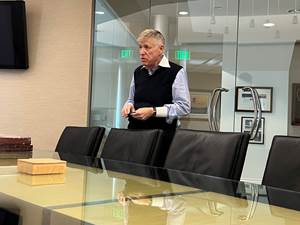Rotary Thermoforming Gets Bigger and Better
Thermoformed Products Inc. (TPI) in Muskegon, Mich., has always been a large-parts specialist.
Thermoformed Products Inc. (TPI) in Muskegon, Mich., has always been a large-parts specialist. It pioneered twin-sheet forming of parts up to 8 or 9 ft long. Last year, this family-run custom firm installed one of the largest rotary thermoforming machines ever built. With this four-station behemoth, whose forming area is 10 x 20 ft and maximum draw depth is 48 in., TPI is producing larger parts than ever before and is making them more efficiently by running multiple tools at once.
Dave Harris, v.p. of manufacturing, says TPI can form three 16-ft-long slides for outdoor playsets at one time on this machine. It's also not uncommon for TPI to form three 6 x 9 ft products together. According to Harris, TPI is also the first thermoformer to challenge thermoset fiberglass composites in making canoes up to 15 ft long. Harris calls this a breakthrough in size for thermoformed water craft, which previously available machinery limited to a maximum of 13 ft.
What makes such ambitious forming jobs possible is the mammoth R-224-E four-station rotary from Brown Machine LLC, Beaverton, Mich. The machine had to be built and shipped to TPI in sections. It has a proprietary clamping system to handle sheets up to 124 x 244 in. But this is no lumbering giant. It is fast and accurate, indexing 90° in 7 sec. Variable-frequency electric motors add a delicate touch to platen movements, capable of increments as small as 1 mm.
Multiple personalities
A huge forming area gives TPI the means to run large parts profitably in low volumes of 100 to 5000 parts. The secret is simultaneous forming of multiple parts from sheets of different colors and thicknesses (0.190 to 0.300 in.) and with draw depths varying from 4 to 48 in. A special stacking and loading station on the machine can handle multiple sheets per cycle.
TPI mounts up to six separate molds, or single tools with up to eight cavities, to make products for automotive, recreational, and agricultural uses. The cavities can be different as well. TPI recently produced an automotive pallet that holds six different parts. "The customer thought he would need six different trays, but it took only one," says Harris.
Molding multiple parts or cavities requires not only 520 individually programmable ceramic oven zones (260 top and bottom), but also three zones of vacuum control top and bottom, and profiled vacuum within each zone. An advanced process controller monitors temperature of the mold and the ambient air to help control this tricky process.
Makes own sheet & molds
Harris says precise heating of one giant sheet or several individual pieces is critical to good part forming. "Heating the sheet can be a problem. Everything has to come out of the oven at the same time and at the perfect forming temperature." TPI extrudes its own sheet to get more control of the process. "Producing our own sheet allows us to orient the molecules in the sheet for more or less sag, so that deep- or shallow-draw parts can be made from sheet with similar starting gauges," Harris explains.
TPI makes all its own molds, primarily of cast aluminum. The rest are of wood, ceramic, or epoxy. The mold department developed an innovative way to join modular tools together to make a single multi-cavity mold. This allows customers to start production of a new part with one or two cavities and later to expand production by adding more identical mold modules.
Related Content
Sheet Extrusion, Thermoforming Tips for PLA/aPHA Blends
Biopolymers like PLA and PHA are able to meet sustainability goals while also delivering the performance attributes needed in rigid food packaging. Here’s what testing has shown.
Read MoreA Processor's Perspective: What's Driving Growth in Heavy-Gauge Thermoforming
Key factors for the progress are innovative materials, advanced automation and precision engineering.
Read MoreSPE Thermoforming Division Announces Biennial Parts Competition Call for Entries
This year’s parts competition includes two new categories with a focus in innovations in the use of sustainable thermoforming and in applications for electric vehicles and batteries.
Read MoreUS Merchants Makes its Mark in Injection Molding
In less than a decade in injection molding, US Merchants has acquired hundreds of machines spread across facilities in California, Texas, Virginia and Arizona, with even more growth coming.
Read MoreRead Next
Lead the Conversation, Change the Conversation
Coverage of single-use plastics can be both misleading and demoralizing. Here are 10 tips for changing the perception of the plastics industry at your company and in your community.
Read MoreBeyond Prototypes: 8 Ways the Plastics Industry Is Using 3D Printing
Plastics processors are finding applications for 3D printing around the plant and across the supply chain. Here are 8 examples to look for at NPE2024.
Read More









